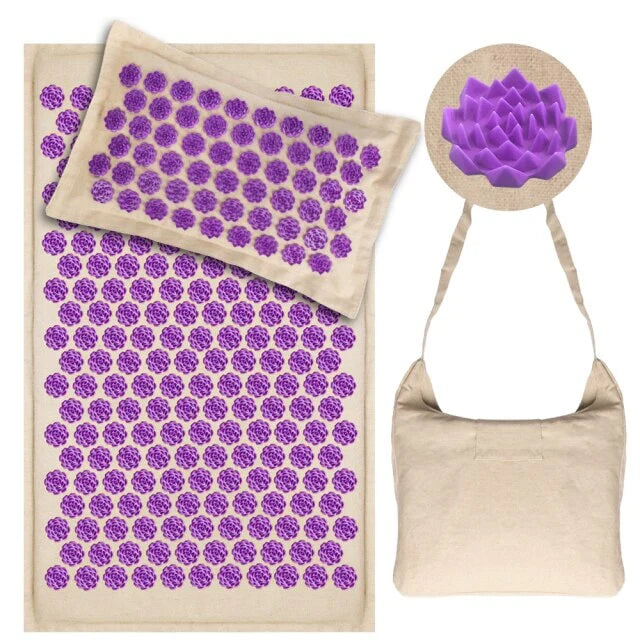Massage oils play a crucial role in the art of massage therapy, enhancing the experience and benefits for both the giver and receiver. Defined as lubricants used to reduce friction and facilitate smooth, gliding movements over the skin, massage oils have been utilized for centuries across various cultures.
Historically, oils were selected for their healing properties and aromatic qualities, contributing to both physical and emotional well-being. In modern times, the importance of choosing the right massage oil cannot be overstated, as it impacts the effectiveness of the massage and the comfort of the individual.
This guide will explore the different types of massage oils, factors to consider when choosing them, and the benefits they offer.
Types of Massage Oils
Carrier Oils
Carrier oils are the base oils used in massage therapy, often chosen for their neutral scent and ability to dilute essential oils.
- Sweet Almond Oil: This lightweight, easily absorbed oil is a favorite among massage therapists. It is rich in vitamins E and A, which nourish the skin and provide a smooth texture for gliding movements.Sweet almond oil is ideal for most skin types and is particularly beneficial for Swedish massages, providing a relaxing and soothing experience. It's also hypoallergenic, making it a great choice for sensitive skin.
- Jojoba Oil: Known for its close resemblance to the skin’s natural sebum, jojoba oil is excellent for all skin types, including sensitive and acne-prone skin.It has anti-inflammatory properties, making it a great choice for deep tissue massages that target muscle tension and pain. Jojoba oil also has a long shelf life, adding to its popularity among massage therapists.
- Coconut Oil: This oil is celebrated for its moisturizing properties and ability to absorb quickly into the skin. Rich in antioxidants, coconut oil helps protect the skin from damage and promotes healing.It is perfect for sports massages due to its ability to penetrate deeply and provide long-lasting hydration without leaving a greasy residue. Fractionated coconut oil, which remains liquid at room temperature, is commonly used for its light texture and non-staining properties.
- Grapeseed Oil: With its mild scent and light texture, grapeseed oil is ideal for individuals who prefer unscented or subtly scented oils.It is non-comedogenic, meaning it won’t clog pores, making it suitable for all skin types. Grapeseed oil is often used in relaxation massages and is known for its high content of vitamins E and C, as well as essential fatty acids.
- Olive Oil: Traditionally used in Mediterranean cultures, olive oil is packed with antioxidants and has anti-inflammatory properties. It is best used for lighter massages, such as Swedish massages, as it is thicker and may require more effort to work into the skin.Olive oil helps soothe and hydrate the skin, making it an excellent choice for individuals with dry or mature skin.
- Apricot Kernel Oil: This oil is rich in vitamins A and E, and is easily absorbed, making it suitable for all skin types. It has a light texture and is particularly beneficial for dry and sensitive skin. Apricot kernel oil provides a silky smooth glide, perfect for therapeutic massages.
Essential Oils
Essential oils are concentrated plant extracts that add therapeutic benefits and aromatic qualities to massage oils.
- Lavender Oil: Known for its calming and relaxing effects, lavender oil is perfect for stress relief and promoting better sleep. It can be added to any carrier oil to enhance relaxation massages.
- Peppermint Oil: With its cooling and invigorating properties, peppermint oil is excellent for relieving muscle pain and tension. It is often used in sports and deep tissue massages.
- Eucalyptus Oil: This oil has anti-inflammatory and decongestant properties, making it ideal for massages aimed at relieving respiratory issues and muscle pain.
- Tea Tree Oil: Renowned for its antiseptic and anti-inflammatory qualities, tea tree oil is beneficial for acne-prone skin and can be used in massages to promote skin health.
- Rosemary Oil: With its stimulating and pain-relieving properties, rosemary oil is perfect for massages that aim to enhance circulation and reduce muscle soreness.
Factors to Consider When Choosing a Massage Oil
Selecting the right massage oil depends on several factors, ensuring it meets both therapeutic and personal needs.
- Skin Type: Different oils suit different skin types. For instance, oily skin benefits from light, non-comedogenic oils like grapeseed, while dry skin requires more hydrating oils like coconut or olive oil. Those with sensitive skin should opt for hypoallergenic oils like sweet almond or jojoba.
- Therapeutic Needs: The purpose of the massage significantly influences the choice of oil. Relaxation massages benefit from calming oils like lavender, while pain relief massages might use arnica or peppermint oils. Aromatherapy massages often incorporate essential oils to enhance mood and relaxation.
- Allergies and Sensitivities: It's essential to be aware of any potential allergens in massage oils. Common allergens include nuts (in sweet almond oil) and specific plant extracts. Performing a patch test before full application can prevent adverse reactions. For those with allergies, hypoallergenic oils like jojoba or grapeseed are excellent choices.
- Consistency and Absorption: Oils that are easily absorbed and do not leave a greasy residue are often preferred. Light oils like fractionated coconut and grapeseed provide a smooth glide and are suitable for most massage types.Heavier oils like olive and avocado offer deep moisturizing benefits but may require more effort to absorb into the skin.
How to Use Massage Oils Effectively
Proper application of massage oils enhances the overall experience and effectiveness of the massage.
- Application Techniques: Start with a small amount of oil, warming it between your hands before applying to the skin. This helps the oil spread more easily and feels more comfortable for the person receiving the massage.Gradually add more oil as needed to maintain a smooth glide without over-saturating the skin. For an enhanced experience, oils can be infused with essential oils to add fragrance and additional therapeutic benefits.
- Massage Techniques: Employ various massage strokes such as effleurage (long, gliding strokes), petrissage (kneading), and friction (deep, circular movements) to target different muscle groups.For different body parts, adapt your technique – use gentler strokes for the face and firmer pressure for the back and legs. Using tools like massage stones or rollers can also enhance the therapeutic benefits.
Benefits of Using Massage Oils
- Massage oils offer a range of benefits that enhance both the physical and emotional aspects of massage therapy.
- Physical Benefits: Using massage oils improves circulation by facilitating smooth, continuous strokes. This enhances blood flow, promotes muscle relaxation, and aids in the healing process.Additionally, oils help nourish and hydrate the skin, leaving it soft and supple. Oils rich in vitamins, such as almond and apricot kernel oil, provide essential nutrients that improve skin health.
- Mental and Emotional Benefits: The sensory experience of massage oils, especially when combined with essential oils, can significantly reduce stress and anxiety.The act of massage itself releases endorphins, and the aromatic qualities of essential oils like lavender and chamomile further enhance relaxation and improve mood. Aromatherapy oils can create a calming environment that enhances the overall wellness experience.
DIY Massage Oil Recipes
Creating your own massage oils allows for customization and control over ingredients.
Basic Recipe for Beginners: Start with a simple blend of 4 tablespoons of a carrier oil like sweet almond or jojoba, and add 10-12 drops of an essential oil such as lavender or peppermint.
Mix well and store in a dark glass bottle. This basic recipe can be used for general relaxation massages and is suitable for all skin types.
Customized Blends for Specific Needs:
- Relaxation Blend: Combine 4 tablespoons of sweet almond oil, 5 drops of lavender oil, and 5 drops of chamomile oil. This blend is perfect for a calming and soothing massage.
- Pain Relief Blend: Mix 4 tablespoons of coconut oil, 6 drops of peppermint oil, and 4 drops of eucalyptus oil. This blend is excellent for muscle pain and tension relief.
- Energizing Blend: Use 4 tablespoons of grapeseed oil, 5 drops of rosemary oil, and 5 drops of lemon oil. This blend helps invigorate and uplift the mood.
Common Mistakes to Avoid
Avoiding common pitfalls ensures a safe and effective massage oil experience.
- Overuse of Essential Oils: Essential oils are highly concentrated and should be used sparingly. Overuse can cause skin irritation and sensitivity. Always dilute essential oils in a carrier oil and adhere to recommended ratios.
- Ignoring Allergies and Skin Reactions: Always perform a patch test before using a new oil. Apply a small amount to the inner wrist or elbow and wait 24 hours to check for any adverse reactions. This step is crucial to prevent allergic reactions and skin irritation.
- Using Low-Quality Oils: Opt for high-quality, cold-pressed, and organic oils whenever possible. Low-quality oils may contain additives or impurities that can cause skin irritation and reduce the effectiveness of the massage.
Radically New: Integrating Modern Technology in Massage Oil Use
Modern technology offers innovative ways to enhance the use of massage oils.
- Smart Devices for Massage Oil Application: Devices like smart massagers can be used to apply oils more evenly and with consistent pressure. These devices often come with features such as adjustable heat and vibration settings, adding to the therapeutic benefits of the massage.
- Online Tools and Apps for Personalized Oil Selection: Several apps can help you select the best massage oil based on your specific needs. These tools consider factors like skin type, therapeutic goals, and personal preferences to recommend the ideal oil. These resources are invaluable for both clients and therapists to learn and make informed decisions.
- Virtual Consultations with Experts: Platforms offering virtual consultations with massage therapists or aromatherapists can provide personalized advice on selecting and using massage oils.
These consultations can address individual concerns and offer tailored recommendations, enhancing the overall massage experience.
Conclusion
In summary, choosing the right massage oil involves understanding the types of oils available, considering factors like skin type and therapeutic needs, and being mindful of allergies and sensitivities.
Proper use of massage oils can greatly enhance the benefits of massage therapy, providing both physical and emotional relief. As technology advances, new tools and methods are emerging to make the selection and application of massage oils even more effective and personalized.
By staying informed and open to innovation, you can ensure the best possible massage experience, enjoying the therapeutic benefits and relaxation that a perfect massage oil can provide.
Frequently asked questions about choosing the best massage hula
What are the best oils for massage therapy?
The best oils for massage therapy include sweet almond oil, jojoba oil, coconut oil, grapeseed oil, and olive oil. These oils are popular among massage therapists due to their various benefits.
Sweet almond oil is lightweight and easily absorbed, making it ideal for most skin types. Jojoba oil is similar to the skin's natural sebum, perfect for sensitive and acne-prone skin.
Coconut oil is deeply moisturizing and excellent for sports massages. Grapeseed oil offers a light texture and is non-comedogenic, suitable for all skin types. Olive oil, rich in antioxidants, is best for lighter massages.
How do I choose the right massage oil for my skin type?
Choosing the right massage oil depends on your skin type. For oily skin, opt for light, non-comedogenic oils like grapeseed oil or fractionated coconut oil. Dry skin benefits from more hydrating oils such as coconut or olive oil.
Sensitive skin responds well to hypoallergenic oils like sweet almond or jojoba oil. Always perform a patch test before using a new oil to ensure compatibility and avoid potential allergic reactions.
Are essential oils safe to use in massage oils?
Essential oils are safe to use in massage oils when properly diluted in carrier oils. They offer therapeutic benefits and enhance the massage experience with their aromatic qualities.
Popular essential oils for massage include lavender for relaxation, peppermint for pain relief, and eucalyptus for its anti-inflammatory properties. Always follow recommended dilution ratios, typically 10-12 drops of essential oil per ounce of carrier oil, and avoid using essential oils directly on the skin.
What are the benefits of using natural massage oils?
Natural massage oils provide numerous benefits, including improved skin hydration, nourishment, and protection. Oils rich in vitamins, such as sweet almond oil (vitamins E and A) and apricot kernel oil, nourish the skin and enhance its health.
Natural oils are also less likely to cause skin irritation compared to synthetic oils. They improve circulation, reduce muscle tension, and promote overall relaxation, making the massage experience more beneficial and enjoyable.
Can massage oils cause allergic reactions?
Massage oils can cause allergic reactions, especially if they contain common allergens like nuts or specific plant extracts. It is crucial to perform a patch test before full application.
Apply a small amount of the oil to the inner wrist or elbow and wait 24 hours to check for any adverse reactions. Hypoallergenic oils such as jojoba and grapeseed are excellent choices for those with sensitive skin or known allergies.
How do I properly apply massage oil?
To properly apply massage oil, start with a small amount and warm it between your hands before applying it to the skin. This helps the oil spread more easily and feels more comfortable for the recipient.
Gradually add more oil as needed to maintain a smooth glide without over-saturating the skin. Use various massage strokes, such as effleurage and petrissage, to target different muscle groups and enhance the therapeutic benefits.
Which massage oils are best for sensitive skin?
For sensitive skin, hypoallergenic oils like sweet almond oil and jojoba oil are the best choices. These oils are gentle, easily absorbed, and less likely to cause irritation.
Jojoba oil is particularly beneficial as it mimics the skin’s natural sebum, making it suitable for even the most sensitive skin types. Always perform a patch test before using a new oil to ensure it is safe for your skin.
How do I store massage oils to maintain their quality?
Store massage oils in a cool, dark place to maintain their quality and extend their shelf life. Use dark glass bottles to protect the oils from light exposure, which can degrade their properties.
Ensure the bottles are tightly sealed to prevent oxidation. Some oils, like fractionated coconut oil, have a longer shelf life, while others, like sweet almond oil, should be used within six months to a year.
What are the differences between carrier oils and essential oils?
Carrier oils are base oils used to dilute essential oils and facilitate their application on the skin. Examples include sweet almond oil, jojoba oil, and grapeseed oil.
They are typically odorless or have a mild scent and provide moisturizing and nourishing benefits. Essential oils, such as lavender or peppermint, are concentrated plant extracts known for their therapeutic and aromatic properties. They should always be diluted in carrier oils before use to prevent skin irritation.
Can I make my own massage oil blends at home?
Yes, you can make your own massage oil blends at home. Start with a carrier oil like sweet almond or jojoba oil and add a few drops of your favorite essential oils.
For a basic blend, mix 4 tablespoons of carrier oil with 10-12 drops of essential oil. Customize blends for specific needs, such as a relaxation blend with lavender and chamomile or a pain relief blend with peppermint and eucalyptus. Store your homemade blends in dark glass bottles to preserve their quality.








